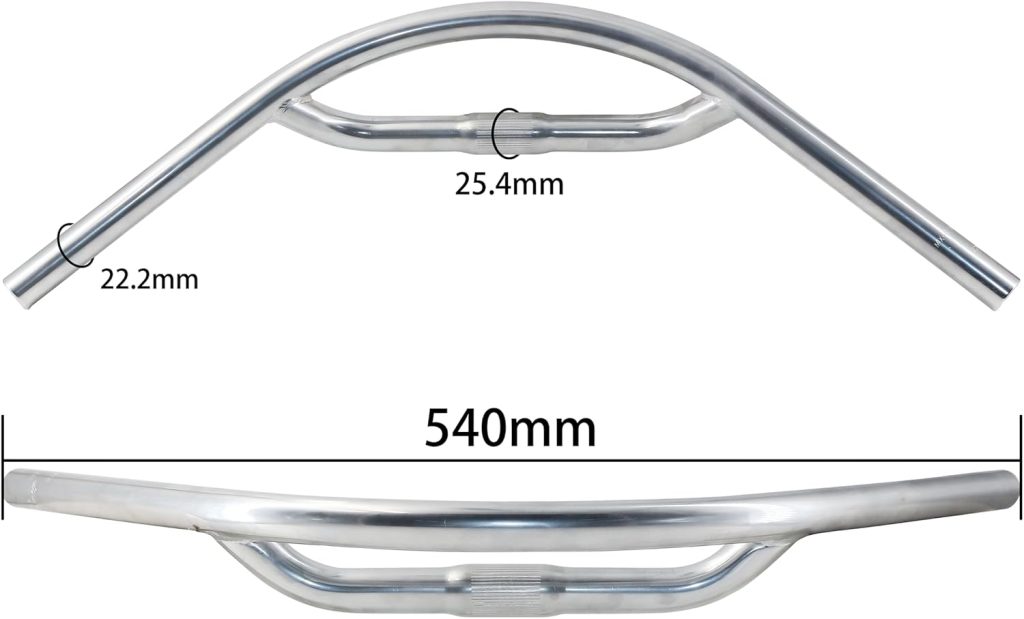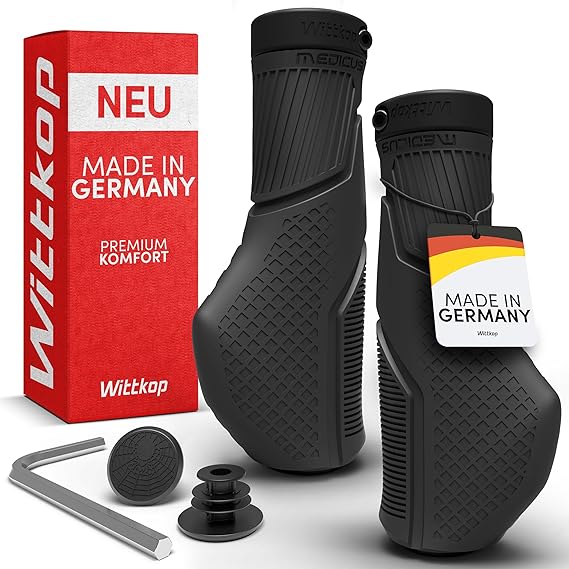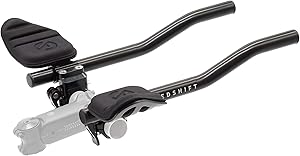Looking for the perfect fit? Check Out These Best-Selling Bicycle Handlebar.






Bicycle handlebar size chart helps cyclists determine the correct width of handlebars based on their body measurements, riding style, and the type of cycling they plan to do. The handlebar width plays a crucial role in bike control, comfort, and performance.
Bicycle Handlebar Size Chart
| Handlebar Type | Width Range (cm) | Recommended Use |
|---|---|---|
| Road Bike (Racing) | 36 – 44 cm | For road racing, time trials, and general road riding. Narrower bars for aerodynamics. |
| Mountain Bike (MTB) | 66 – 80 cm | For off-road cycling, including trail and downhill. Wider bars for better control and leverage. |
| Gravel Bike | 40 – 46 cm | For gravel riding, touring, or adventure cycling. Wider bars for stability on rough terrain. |
| Hybrid/Commuter Bike | 50 – 60 cm | For city commuting and comfort cycling. Moderate width for balance and comfort. |
| Cruiser Bike | 60 – 70 cm | For leisurely, relaxed rides. Wider bars for a comfortable upright riding position. |
| Track Bike | 36 – 40 cm | For track racing. Narrower bars for aerodynamics and maneuverability. |
How to Choose the Right Handlebar Width
- Riding Style:
- Road Racing: Narrow handlebars (36-44 cm) are preferred for aerodynamics and better handling at higher speeds.
- Mountain Biking (MTB): Wider handlebars (66-80 cm) offer more control, especially on rugged trails.
- Gravel & Adventure Riding: A width of 40-46 cm is ideal for stability over rough terrains, giving extra control.
- Commuting or Hybrid Bikes: A moderate width (50-60 cm) ensures a comfortable riding position and good control.
- Cruiser Bikes: These typically have wider handlebars (60-70 cm) for a relaxed, upright posture.
- Your Body Size:
- Arm Span: A common method for determining the handlebar width is by measuring your arm span (the distance from fingertip to fingertip). The handlebar width is often set around the same measurement or slightly narrower.
- Shoulder Width: The handlebar width should generally match the width of your shoulders. If the handlebars are too wide, it could cause discomfort, and if they are too narrow, it could affect control.
- Bike Type:
- The type of bike you are riding significantly impacts the handlebar width. Road bikes require narrower bars for aerodynamic efficiency, while mountain bikes need wider bars for greater stability and control in rough conditions.
FAQs About Bicycle Handlebar Size Chart
1. How do I choose the right handlebar size?
Handlebar size depends on your riding style, bike type, and shoulder width. A properly sized handlebar improves control, comfort, and aerodynamics.
2. What are the standard bicycle handlebar widths?
- Road Bikes: 36-46 cm (shoulder width)
- Mountain Bikes (MTB): 700-800 mm (wider for better control)
- Hybrid/Commuter Bikes: 580-660 mm
- BMX Bikes: 650-750 mm
3. How do I measure my handlebar width?
Measure from the center of one drop or grip to the other (for drop bars) or from end to end (for flat bars).
4. Should my handlebars match my shoulder width?
For road bikes, yes—handlebars should be about the same width as your shoulders to optimize aerodynamics and comfort.
5. What is the difference between drop bars, flat bars, and riser bars?
- Drop Bars: Used on road bikes for speed and aerodynamics.
- Flat Bars: Found on hybrids/MTBs, providing better control.
- Riser Bars: Common in MTBs, allowing a more upright position.
6. How does handlebar width affect performance?
- Wider bars offer more control and stability (good for mountain biking).
- Narrower bars improve aerodynamics (ideal for road cycling).
7. What is handlebar rise and why does it matter?
Rise refers to how much the handlebar curves upward from the center. More rise = a more upright riding position for comfort.
8. How do I choose the right handlebar diameter?
- Road Bikes: 31.8 mm (most common), 25.4 mm (older models)
- MTBs: 31.8 mm or 35 mm for added strength
- BMX: 22.2 mm
9. Can I change my handlebar size?
Yes! Many handlebars are interchangeable, but make sure they match your bike’s stem clamp size and riding style.
10. Does handlebar shape affect comfort?
Yes! More relaxed curves (on drop bars) or higher rise (on riser bars) can ease wrist strain and improve long-ride comfort.
Conclusion
Choosing the right handlebar size enhances control, comfort, and efficiency. Always consider your riding style, body fit, and bike type when selecting handlebars. 🚴♂️🔥
